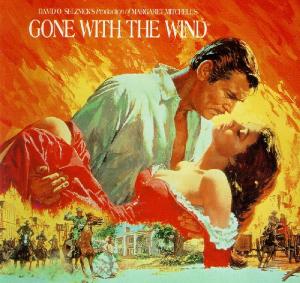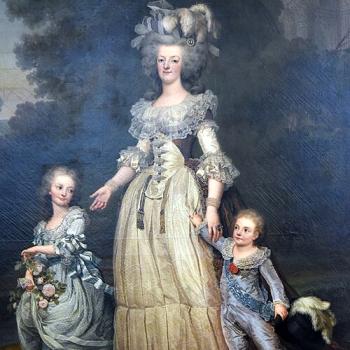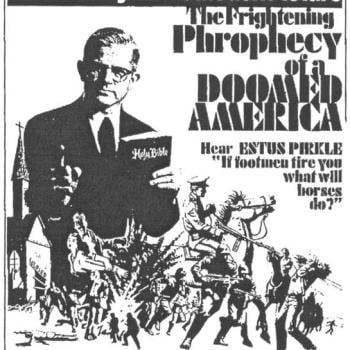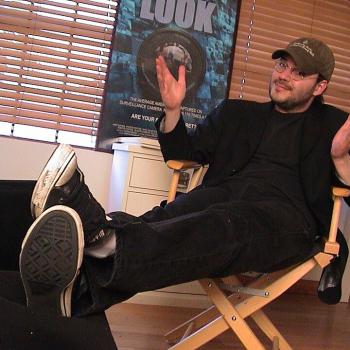
Source: Flicker user Elycefeliz
License
Gone with the Wind (1939) has a dubious honor. It exists at a triple remove from us. The David O. Selznick-produced epic is a tale of the mid-nineteenth century told by way of the wistful Lost Cause made by strongheaded, modern studio executives high on the fumes of the Roaring Twenties. If my brief perusal of Reddit is any indication, its racisms are too convoluted to do much but concern young people (or at least, I hope they’re young people). Since watching the 85th-anniversary screening at my local theater yesterday, I can’t shake a long rant I read afterward, which, while it dodges the racist elements, begins:
It is a 4 hour movie.
Rhett does not understand consent at any point in the movie and watching him interact with Scarlet is super uncomfortable.
Most of the bad stuff that happens to Scarlet is the direct consequence of her being a brat and I am unable to feel bad for her.
Four. Hours.
Of course, this is rich coming from the present when most series extend well beyond four hours. But let’s leave that aside.
I was floored by Gone with the Wind—visually, narratively, and even morally. It was less racist than I expected. It was still incredibly racist, yes; my jaw hasn’t quite retracted after the white, convict slavery scene. But Lost Cause BS is all over the internet today. Its disgusting defense of the South has nothing on the irredeemable dreck to be found in Birth of a Nation (1915) or the US’s minstrel shows, many of which chugged right along through the early twentieth century. The fact that a movie from 1939 eschewed blackface, occasionally made the Confederates look even a little bad, and refused (for the most part) simple moralism about Walter Scott-esque gentlemanly honor blew me away. Bad as it is, Twitter (sorry, “X”) is worse.
Scarlett (Vivien Leigh) and Rhett (Clark Gable) are what today we might call a “toxic couple.” To be offended by his sexual violence or her brattishness is to become more moralistic than the film itself, the avowed purpose of which is to recolor the depraved antebellum South. Perhaps owing to its novelistic roots (I have not read the book), Gone with the Wind’s willingness to sit with ambiguity—even in its protagonist—makes for compelling viewing.
We follow Scarlett O’Hara from a fickle, coquettish girl to a hard-nosed businesswoman, unwilling to bow before any man. She never drops her childish arrogance. At the same time, we can’t help but admit her singularity. She survives Sherman’s sack of Atlanta and guides a pregnant woman and her newborn back to safety. Her grit is matched only by her self-delusion, her belief that she can have a man who does not and cannot love her, a man of pure heart and consistent devotion.
Her match is Rhett Butler, a Charleston rogue who loves Scarlett because she’s the only Southerner immune to the Confederacy’s delusions of gallantry and honor. Within the film’s first twenty minutes, Rhett knocks down the whole gentlemanly house of cards: The South doesn’t have anything but slaves, cotton, and arrogance.” South Carolina was the only state in the Confederacy not to have a unit fighting for the Union. Rhett is a rare breed.
Scarlett marries three times. The first for revenge and the latter two for economic advancement. She has no problem working with the Carpetbaggers and Scalawags dotting Gone with the Wind’s mythical version of postbellum Southern history. Scarlett and Rhett are essentially Northern in mindset—this is how they survive the war and its aftermath. Neither has any delusions about how chivalry can overcome cannons. This puts potential Lost Cause blockheads at cross purposes with the film’s protagonists: does the South escape devastation by becoming the North? Or are the heroes of this movie the gossipy, foolish gentry who throw cocktail parties and fret after the war?
In reality, none of this moral ambiguity was strange for the late 30s. Tallulah Bankhead, Norma Shearer, and Katharine Hepburn all might have played Scarlett O’Hara. The country had just come through the era of Fitzgerald into a Depression so severe many women sought work outside the home for the first time. Scarlett’s mix of shrewdness and capriciousness were the order of the day.
Its ambiguities might be summarized by Hattie McDaniel winning an Oscar for her portrayal of Mammy in the movie. McDaniel does stellar work; the character is a real person. But, of course, she has no name.
It’s our own minds that seem incapable of assimilating these purported contradictions, buried as they are under three layers of historical sediment. My advice: revisit Gone with the Wind. It’s no straightforward teacher of righteousness. But, then again, I’m not sure that’s what cinema is for anyway.













